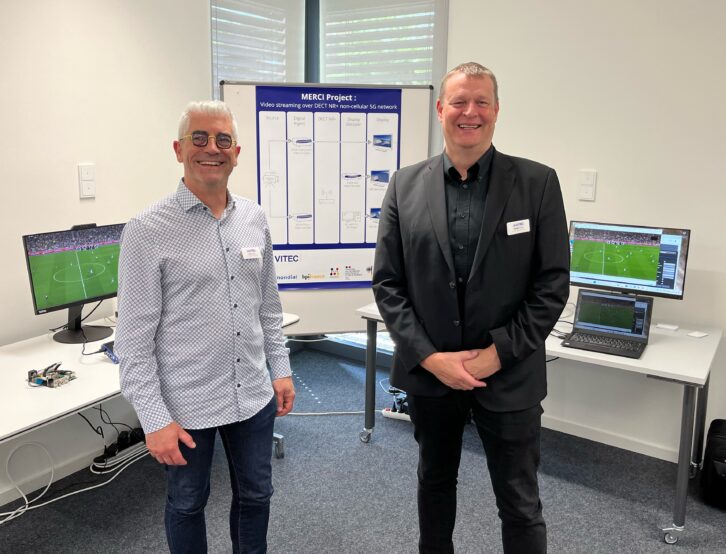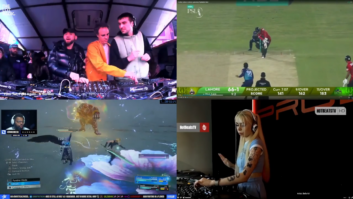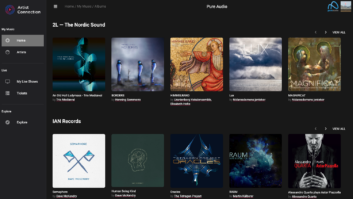VITEC, a provider of IPTV, video streaming and digital signage solutions, and RFmondial, a specialist in wireless transmission technology, have announced the world’s first demonstration of ultra-low latency (below 100ms) video streaming over DECT NR+, the new non-cellular 5G standard.
Achieved as part of the Sennheiser-led Franco-German backed project MERCI, the demonstration took place at a public workshop in Hannover, Germany on April 19, 2024.

As partners in the MERCI project, VITEC and RFmondial joined forces to unveil the potential of DECT NR+ for wireless video transmission. VITEC’s video encoder and decoder and RFmondial’s compact NR+ implementation – based on the Nordic chipset – combined to demonstrate to workshop attendees robust HD video streaming with latency down to 50ms glass to glass over ranges of up to 100 metres.
Eric Deniau, SVP R&D, VITEC, said: “This demonstration shows that Ultra-Low Latency wireless video transmission is now made simple even in very demanding environments, where today complex dedicated technical means are needed.”
Jens Schroeder, managing director, RFmondial, added: “The simplicity of NR+ setup, which does not require infrastructure deployment, together with its robust and high-performance capabilities, make it an ideal solution for wireless video connectivity in applications such as public venues, industrial or medical environments.”
The MERCI project has support from the German and French governments as part of their 5G programmes, with work focused on two use cases where these capabilities will be needed:
•Public venue displays and remote video production where video quality and display latency are key factors.
•Industrial robots and remote vehicle operation where end to end latency and secure transmissions are essential.







